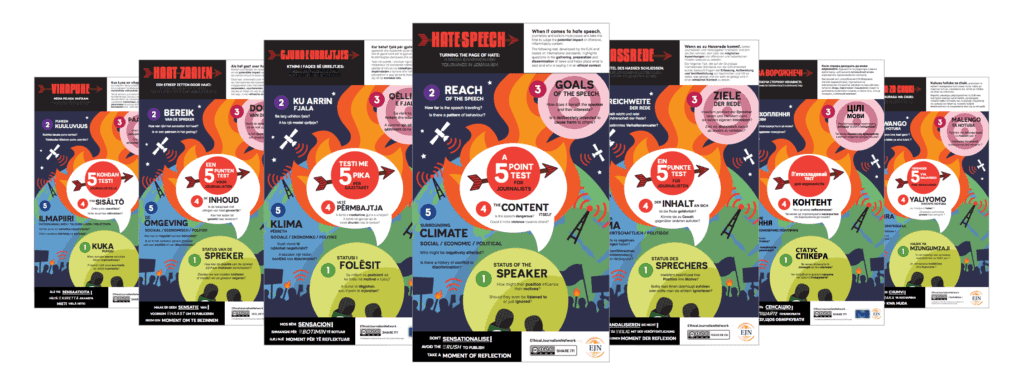6th October 2017
By Tom Law
5-Point Test for Hate Speech – Brazilian Portuguese
Quando se trata de discurso de ódio, jornalistas e editores devem fazer uma pausa e dedicar algum tempo para avaliar o impacto potencial de conteúdos ofensivos e provocativos. O teste a seguir, desenvolvido pela EJN e baseado em padrões internacionais, ressalta questões durante a recolha, preparação e disseminação de notícias e ajuda a enquadrar o que é dito e quem está dizendo num contexto ético.
1. POSIÇÃO DE QUEM FALA
- Como a sua posição pode influenciar seus motivos?
- Deve ser ouvido ou apenas ignorado?
2.ALCANCE DO DISCURSO
- Até que ponto o discurso esta viajando?
- Existe algum padrão de comportamento?
3. OBJETIVOS DO DISCURSO
- Como o discurso beneficia quem fala e os seus interesses?
- Existe intenção deliberada em causar danos aos outros?
4. CONTEÚDO EM SI
- O discurso é perigoso?
- Pode incitar a violência?
5. AMBIENTE EM TORNO DO SOCIAL/ECONÔMICO/ POLÍTICO
- Quem pode ser afetado negativamente?
- Existe um histórico de conflito ou discriminação?
NÃO SENSACIONALIZE!
EVITE A PRESSA EM PUBLICAR
CONSIDERE UM MOMENTO PARA REFLEXÃO
Download the EJN’s 5-Point Test for Hate Speech – Brazilian Portuguese
Download
The EJN’s 5-Point Test Infographics
The EJN’s 5-point test infographic has been translated into over 20 languages. Download it and use it in your newsroom. Contact us if you would like to support the campaign by translating the test into more languages.

Watch the EJN Hate Speech video playlist
The dangers of hate speech in journalism are well known and can have tragic consequences. In response, the Ethical Journalism Network launched the Turning the Page of Hate campaign in 2014 to mark the 20 year anniversary of the Rwandan genocide.